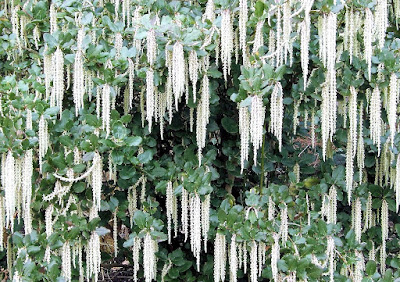 |
| Early artist's impression of Villa Castello |
Ask anyone with the right passions to name Europe's most
important gardens and you can expect to hear the likes of Versailles, the
Alhambra and Kew amongst of course many other worthy contenders. However there
is one that you have probably never heard of and yet is perhaps the most
important of all European offerings. They are the gardens of Villa Castello,
located in the hills north-west of Florence, Tuscany. Why is this place so
important? Because Villa Castello is the earliest garden in existence from which you can draw a line
of influence directly from its inception during the renaissance through the
mannerist, baroque, neoclassical, and romantic periods right up to the present
day!
 |
| Villa Castello |
Since 1477 Villa Castello was owned by the de' Medici's, an
elite banking family whose incredible wealth allowed them to dominate their
city's government. With such influence at their fingertips, Villa Castello was
'unofficially' accepted as the seat of power in Florence.
However it was set to change in 1537, when the current
resident of Villa Castello, the Duke of Florence, Alessandro de' Medici, was
assassinated by a distant cousin creating a massive power-vacuum in the region.
The influential men of Florence decided to take advantage of this and replaced
Alessandro de' Medici with the little known Cosimo I de' Medici. They believed
they could rule the city state with the 17 year old Cosimo I as a puppet
figure, enriching themselves in the process at the expense of Florence.
Cosimo I was persuaded to sign a clause which entrusted much
of the power to a council comprising of 48 members, but quickly rejected it.
During this same period the news of Alessandro de' Medici's death, spurred Florentine
exiles (along with the support of France) to invade Tuscany with the objective
of deposing Cosimo I. The invasion failed, and all prominent and high profile
prisoners were beheaded. In an extremely short period of time and against
considerable odds Cosimo I had manage to established himself as the unrivalled
ruler of Florence.
 |
| Cosimo I de Medici aged 19 |
Of course Florence was still in turmoil, but with his
position as head of the de Medici bank secure Cosimo settled back into Villa
Castello and focused his attention on a grand and ambitious plan for the
gardens. It may seem strange to undertake a major project during such uncertain
and dangerous times but Cosimo had been inspired. The garden was to act as a
symbol of his new order, a distinct contrast to the many previous years of
Florentine family feuds, political confusion, and poor economic conditions. The
renowned sculptor Niccolò Tribolo was commissioned to create the fountains and
statues, but more importantly Tribolo was required to design a garden that
would become a physical representation of good government as well as reflect
Cosimo's sophistication and power. This new garden would prove to visiting
rulers and dignitaries that the de' Medici's were the only family that could
bring long term prosperity and happiness to Tuscany.
A garden that was deliberately intended as a parade of
cultured power was something new in 16th century Italy. Yet while the layout of
the gardens exemplified the high renaissance and maximised the views of the
surrounding countryside, they are both based upon well-established models of
garden design.
It was divided into sixteen compartments, each one
reflecting further, perfect geometric shapes which demonstrated the control of
man over space and nature. It was also the first time that an axis was used (and
still exists to this day) splitting the central path from the Grotto to the
Villa using the extraordinary and impressive fountain of Hercules and Antaeus
as the centre point. This highly geometrical design created a perspective not
seen in any other garden at this time.
 |
| The gardens at Villa Castello in their full glory |
All the fountains at Villa Castello depended upon gravity
and water pressure to function, and fortunately the villa was located near a
Roman aqueduct. In fact the name Villa Castello is taken from the old water
cisterns (known as ‘castella’) near the site. Frustratingly, the Roman aqueduct
was in no fit state to supply the villa and so Piero da San Casciano constructed
a new system of aqueducts to bring water into a new reservoir built in the
sacred bosco. This is still in place
within the elevated section of the garden. The reservoir controlled the water
using a system of bronze pipes which, hidden from view, entered the main body of the garden. While it
is true that many of the fountains have been removed, the statue of Appennino
which symbolise the mountains of Tuscany,still survives in the reservoir. Here
he is portrayed as a shivering old man and when the hydraulics were still
functioning would have spent his life under a constant flow of cold mountain.
 |
| The fountain of Hercules and Antaeus |
Once the water had passed through the fountains, the
overflow was split into and channelled into two small private gardens on either
side of the villa. From there the overspill entered two large fish ponds in
front of the villa. After that, the water was used to irrigate the fields and
gardens below. The area where once the fish ponds existed have long since been
filled in and turned over to lawns.
Sadly today most of the formal ponds have also been filled
in, and the majority of the original fountains have been dismantled and the
water to the grotto switched off. However in its heyday the hydraulic system of
this garden was one of the wonders of the High Renaissance. Designed and engineered
by Piero da San Casciano they too played an important part in the symbolism of
the garden.
Not everything in the garden was to do with expressing power
and control, it was also about fun. With the turn of a key the gate to the
grotto could be locked, leaving guests
inside to be soaked with water from hidden pipes. In the original design the
fountain of Hercules and Antaeus was surrounded by a circle of trees and yet
again by a hidden pipe. Once again,
unsuspecting visitors looking at the fountain could be sprayed with water from
hidden nozzles.
 |
| The Fountain of Appennino, |
The important point to remember is that garden at Villa
Costello was one of the first and most influential of a great wave of Italian
gardens that were built during the latter half of the sixteenth century. Villa
Costello not only stamped its highly distinctive mark on subsequent Medici
properties (such as Villa di Pratolino and the Pitti Palace), but it reached
out beyond Italy to influence the gardens of the French, and later the English
renaissance including the grand gardens of Versailles and Hampton Court.
It hard to believe that the entire citrus collection of
approximately 500 plants was almost lost during the Second World War. The
building used to over-winter the collection was converted to a hospital leaving
no place of the seasonal protection of these tender plants. Left outside, many
of the citrus specimens died during the cold, wet winters but all was not lost.
Gardeners returning from the war quickly assessed the dire situation and were
able to save some of the trees through grafting. You can still see the effects
of these traumatic years in citrus plants bearing carefully bandaged scars.
Today, Villa Costello is perhaps the most authentic
renaissance garden in existence, and holds one of the world’s largest
collections of cultivated citrus grown in terracotta vases. Incredibly, some of
these vases date back to 1790 and a few still include the original plants!
Although the Villa has been the home of the prestigious Crusca Academy since
1583, this fascinating history along with the plants and gardens can all be
yours for free. Why? Because there is no charge for access to the gardens. Get
the timing of your visit right and you can also gain access to the secret
gardens, but don’t tell anyone you heard it from me. As I said, it’s a secret!
Main image in public domain
Image of Cosimo 1 in public domain
Image credit: Gardens layout by Parco di Castello - https://creativecommons.org/licenses/by/2.5/
All other images copyright Simon Eade gardenofeaden@gmail.com
For related articles click onto the following links:
THE GARDENS OF VILLA CASTELLO
Main image in public domain
Image of Cosimo 1 in public domain
Image credit: Gardens layout by Parco di Castello - https://creativecommons.org/licenses/by/2.5/
All other images copyright Simon Eade gardenofeaden@gmail.com
For related articles click onto the following links:
THE GARDENS OF VILLA CASTELLO












